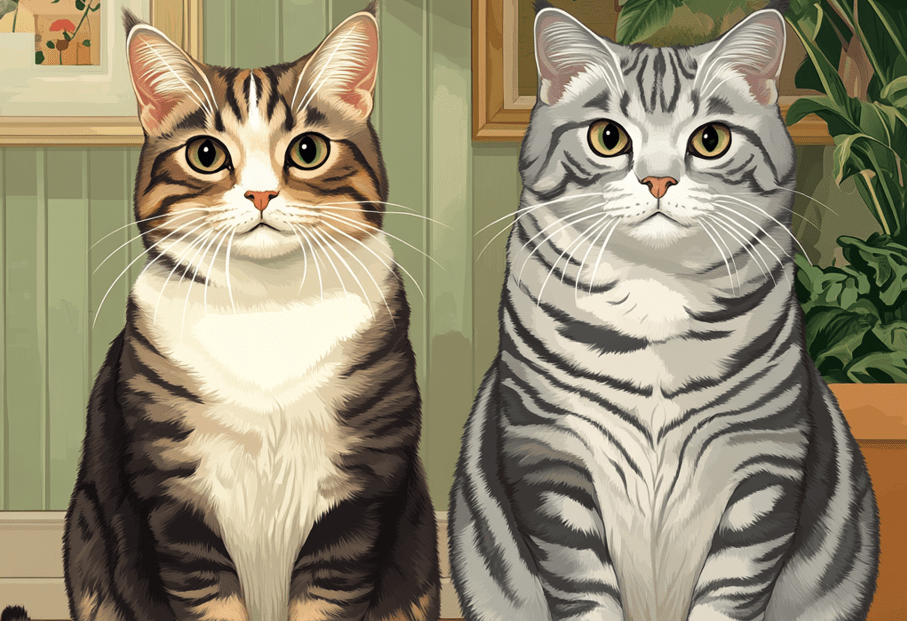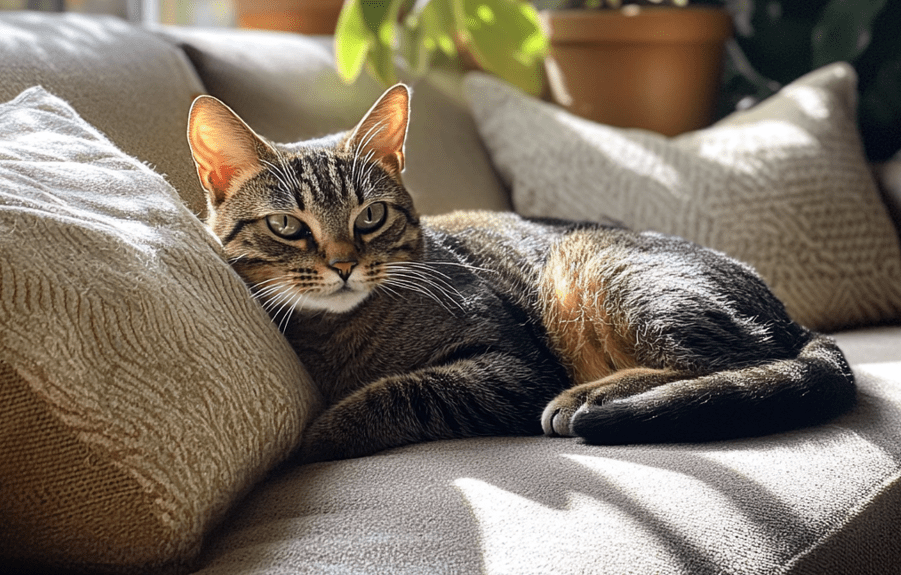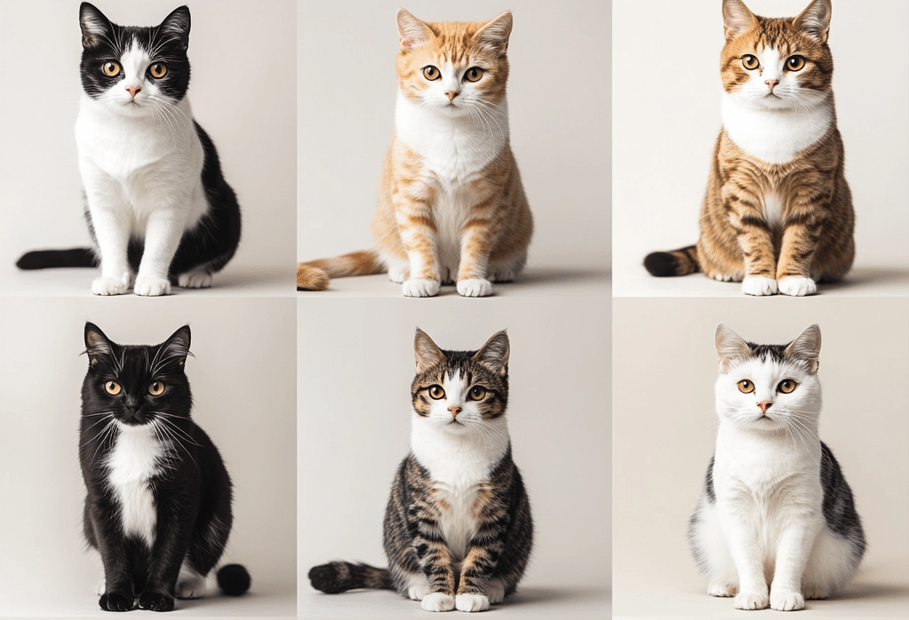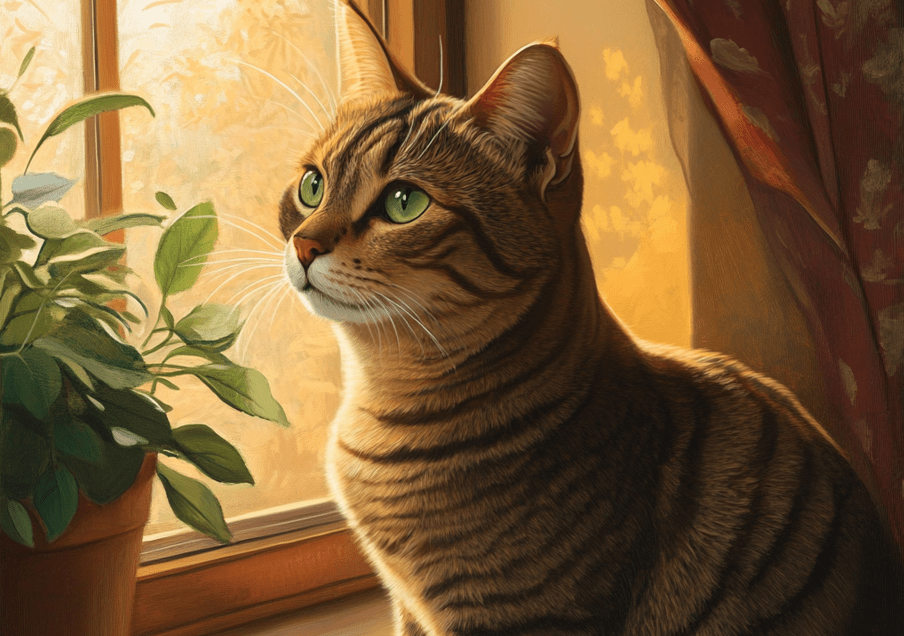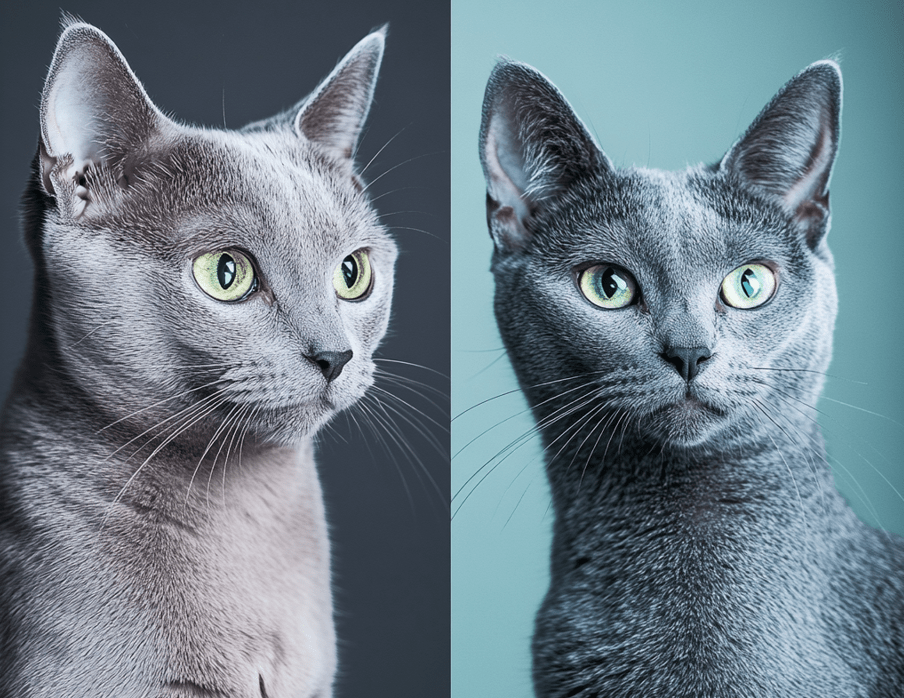
The two cats that have gained popularity as peaceful and friendly cats are Domestic Shorthair and Russian Blue. There is no room for disagreement here. But in the debate between Russian Blue vs. Domestic Shorthair, who will stay ahead remains time’s toughest question. However, you can easily distinguish their differences through some of their unique characteristics.
Russian Blue cats and Domestic Shorthair cats are two popular breeds. Many people consider these breeds when adding a feline friend to their family. Both breeds have their unique characteristics. However, there are some important differences between the two. Potential cat owners should know these differences before making a decision. This article will analyze the differences between Russian Blue and Domestic Shorthair cats. Additionally, seven attractive tendencies of these breeds as pets will be highlighted. Before going into the main comparison, let’s explore a bit to uncover the reasons for their popularity.
Recent trends
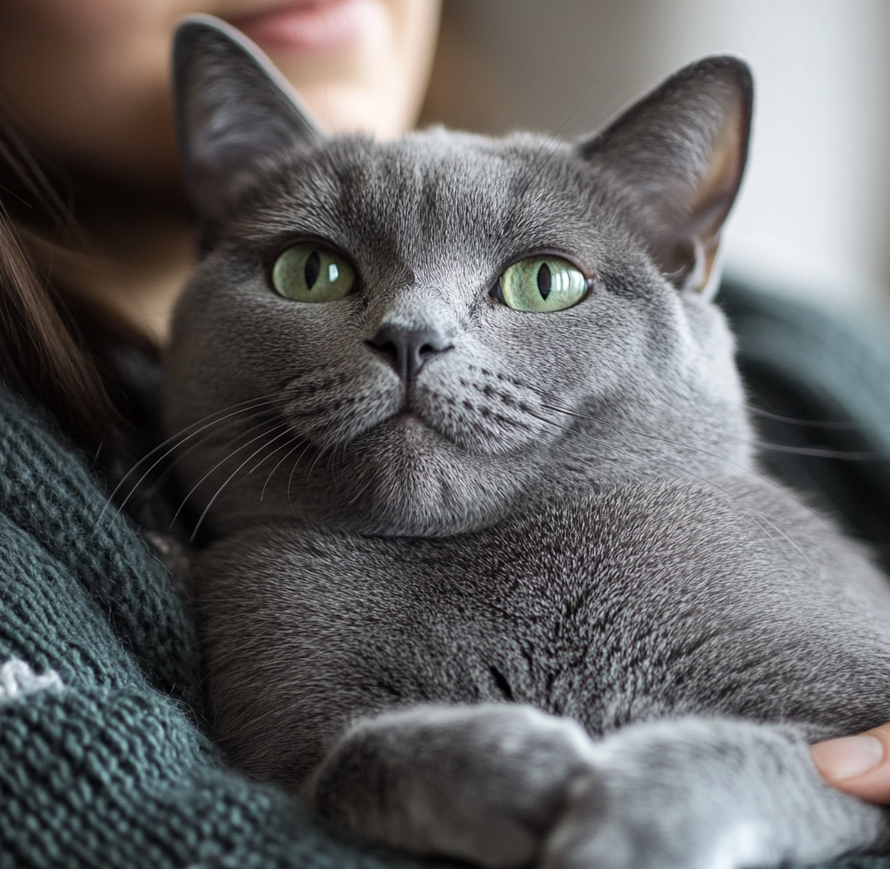
Russian Blue cats have become popular as therapy animals in recent years. These cats are known for their calm and gentle nature, making them ideal companions for individuals suffering from mental health issues. A professional notes that Russian Blues can understand their owners’ emotions and are therefore considered excellent therapy animals.
Meanwhile, the demand for Domestic Shorthair cats is also increasing. Due to their common appearance, these cats are often overlooked in shelters, but they are just as loving and loyal as purebred cats. According to a shelter worker, these cats make excellent family pets and are more resilient and adaptable compared to purebred cats. Many people are now interested in adopting these mixed-breed cats instead of expensive purebreds.
Reasons Behind their popularity on social media
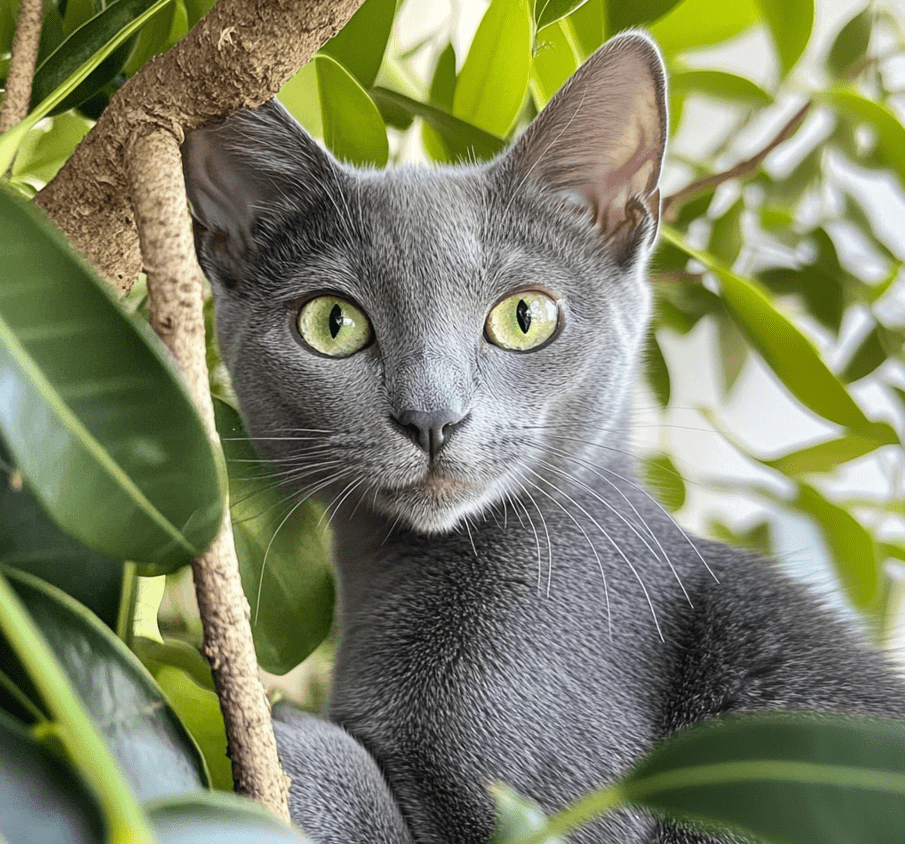
Russian Blue cats are quite popular as social media influencers. Their photogenic appearance and playful personality have attracted numerous followers. Photos and videos of Russian Blue cats receive widespread response on platforms like Instagram and TikTok. A social media manager said that Russian Blue cats‘ beauty and charm captivate online viewers. Their smooth coat and sharp green eyes create amazing pictures that attract lots of engagement.
On the other hand, Domestic Shorthair cats have also achieved success on social media. Many owners have started accounts to showcase their cats‘ unique personalities. A content creator explained that Domestic Shorthairs’ mischievous nature creates entertaining videos that easily go viral. Their behavior connects with a wide audience.
Physical Characteristics
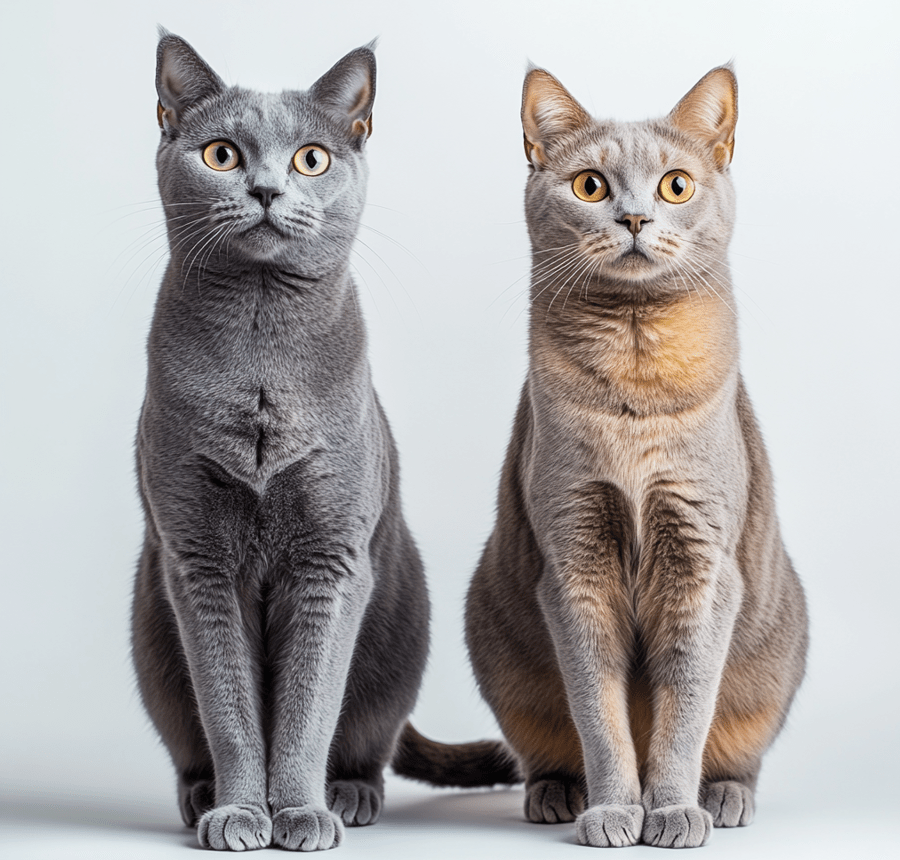
Russian Blue cats are famous for their silver-blue coat, green eyes, and refined appearance. They are medium-sized, slim, muscular, and gentle-natured. Domestic Shorthair cats come in various colors and patterns. They are considered friendly, adaptable, and low-maintenance pets. Domestic Shorthair cats can reach a height of 8-10 inches. They can weigh between 6-12 pounds. Their lifespan is typically 10-20 years. Being mixed breed, they are called “mutts.” Their coat can range from smooth to slightly fluffy.
Temperament and Personality
Russian Blue cats are described as affectionate, intelligent, and loyal companions. They form strong bonds with their owners and are known for their calm nature. Although independent, they enjoy spending time with family members. These characteristics make them suitable as loving and devoted companions.
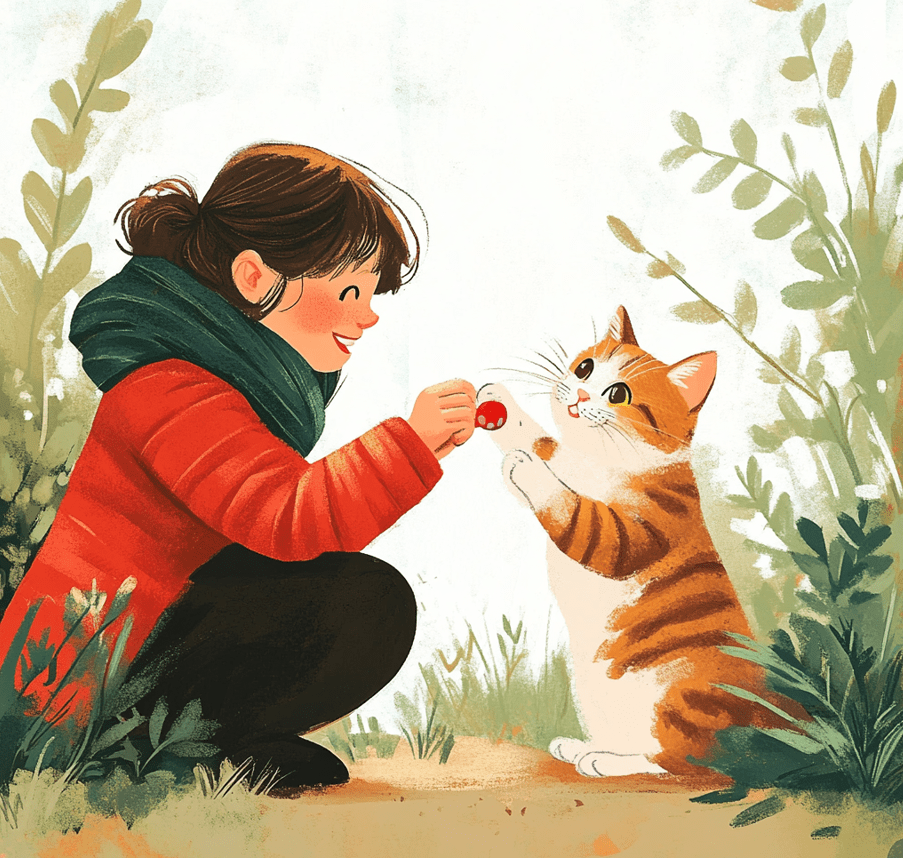
Domestic Shorthair cats are known for their friendly, adaptable, and sociable nature. They can easily adjust to children or other pets. Training and interactive play are easy and enjoyable for them. Their curious nature makes them engaging companions.
Domestic Shorthair cats’ temperament is not as predictable as American Shorthair cats. Some Shorthairs can be very playful, while others might be independent observers. However, most Domestic Shorthairs prefer friendship bonds. These qualities develop when they are nurtured in a friendly manner from childhood.
Grooming Requirements
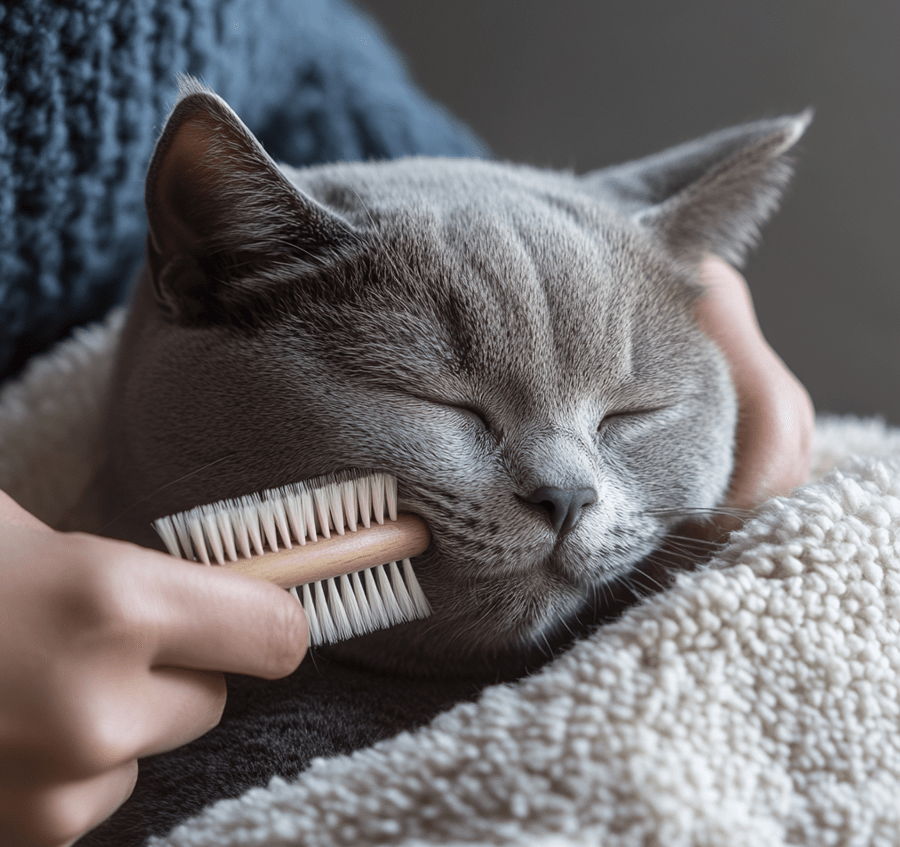
Russian Blue cats’ short, dense coat sheds minimally, requiring low maintenance. Regular brushing and occasional baths are sufficient to keep a Russian Blue cat’s coat healthy and shiny. Their coat is naturally water-resistant, making them efficient at keeping themselves clean. On the other hand, Domestic Shorthairs with longer fur might need more frequent grooming. Regular brushing helps prevent matting and reduce shedding in Domestic Shorthairs. Establishing a grooming routine from the start is important to ensure the cat’s comfort and health.
Cost and Availability
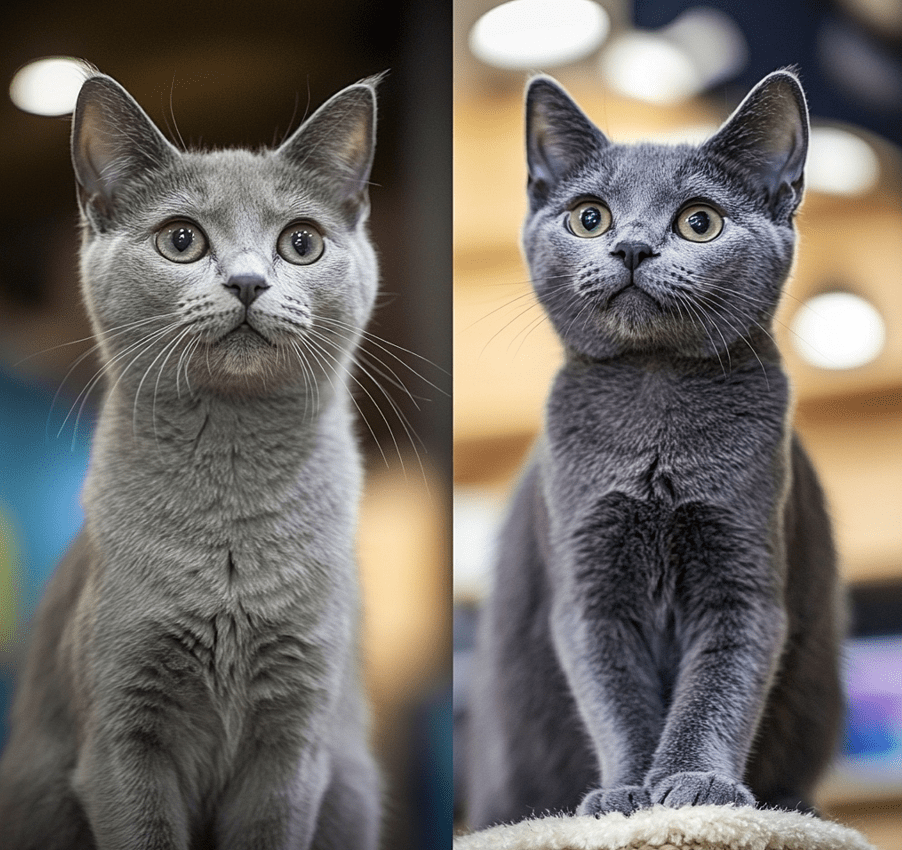
The cost of purchasing a Russian Blue cat can be relatively high. Adopting a Domestic Shorthair cat is comparatively less expensive. Russian Blue cats are typically more expensive due to their lineage and characteristics. It’s possible to get a Domestic Shorthair cat at a lower cost from shelters or rescue organizations. A financial advisor says it’s crucial to consider long-term costs besides the initial purchase cost. Long-term costs include food, veterinary care, and grooming. Adopting a Domestic Shorthair cat can be budget-friendly for many families.
Compatibility with other pets
Russian Blue cats are known for their calm and gentle nature, making them good companions for other cats or dogs. A pet behaviorist says Russian Blue cats should be introduced to other pets slowly and under supervision. Russian Blues are generally sociable and can get along well with other animals when properly introduced.
Domestic Shorthair cats are known for their adaptable and friendly behavior, making them good companions. Being mixed breeds, Domestic Shorthair cats show variety in their behavior. This behavioral diversity makes them suitable for multi-pet families. Being very sociable, Domestic Shorthair cats can easily get along with dogs and other animals. While Domestic Shorthair cats are naturally territorial, their sociable nature can add a different dimension to territoriality. In multi-cat households, they can establish shared territories, such as using different areas at different times of day.
A veterinarian says Domestic Shorthairs’ calm and friendly nature allows them to get along well with other pets. The veterinarian further advises providing adequate space and resources to ensure each pet’s comfort.
Let’s explore their differences based on physical, behavioral, care-requirements, and some other characteristics –
Health and Longevity
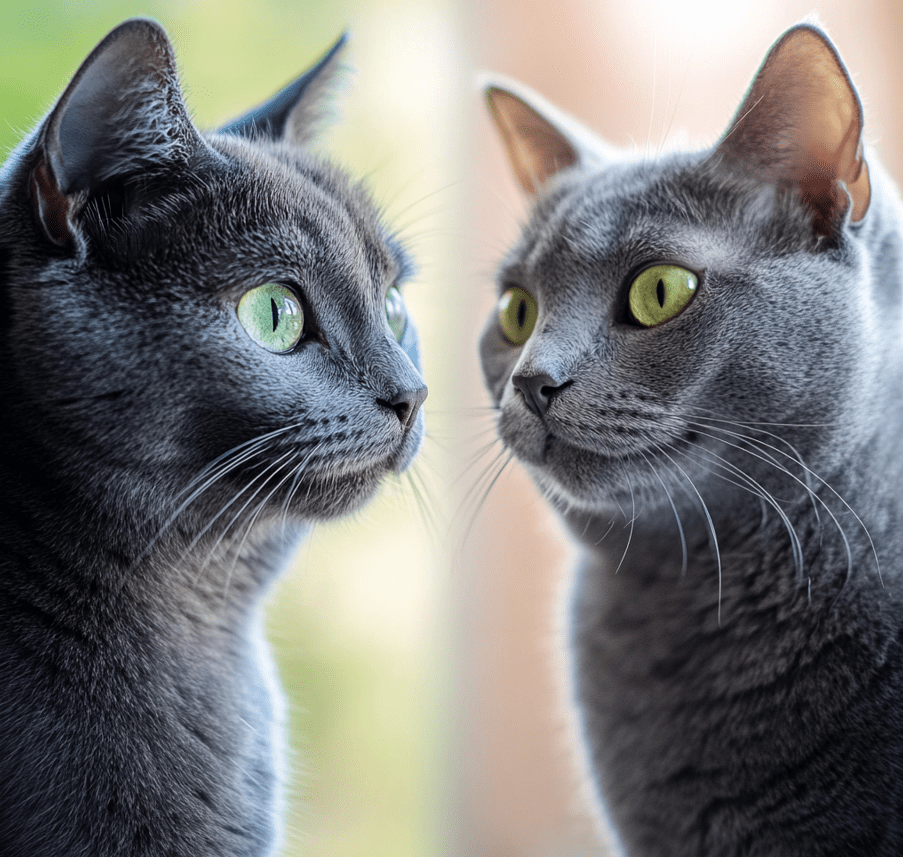
One concern for potential cat owners is the health and wellness of Russian Blue and Domestic Shorthair cats. Russian Blue cats are typically healthy and robust. Their average lifespan is about 15 years or more. A balanced diet, regular exercise, and veterinary check-ups are essential for Russian Blue cats. They are at risk for certain genetic conditions, so it’s important to be aware of potential health risks. Domestic Shorthair cats are known for their strong health and longevity. Their average lifespan is 12-15 years. Domestic Shorthair cats’ diverse genetic background contributes to their resilience. A nutritious diet, regular exercise, and preventive healthcare help ensure a long and healthy life.
Conclusion
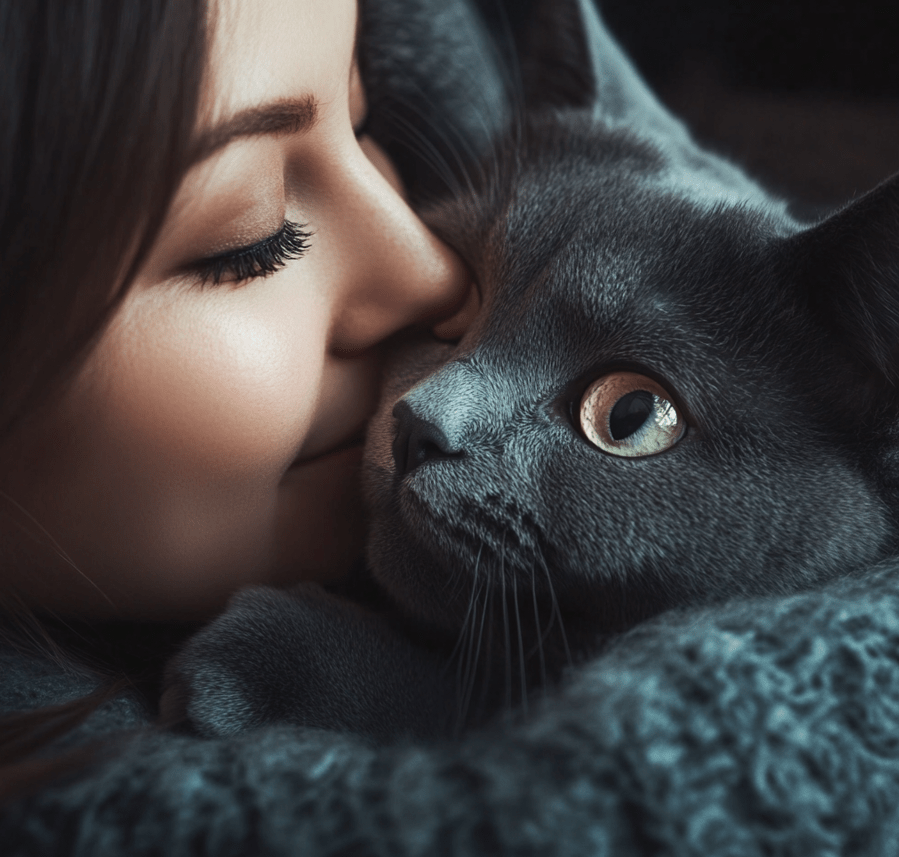
Russian Blue and Domestic Shorthair cats are two popular breeds. Each breed has its unique characteristics and qualities. Russian Blue cats are known for their refined appearance and gentle behavior. Domestic Shorthair cats are friendly, adaptable, and low-maintenance pets. Both breeds can make excellent family companions. When choosing a cat, it’s important to consider grooming, compatibility with other pets, health, and temperament. The most important thing is choosing a cat that fits your lifestyle. It’s essential to provide cats with the love and care they deserve.

